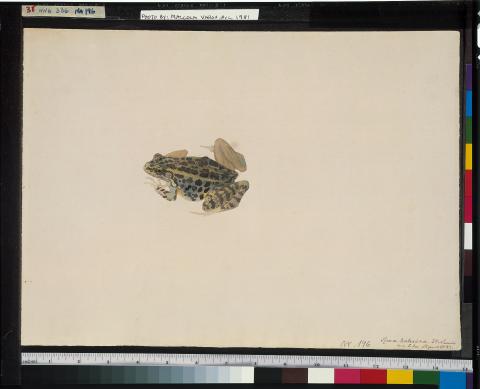April 1, 1833
1 April: At seven thirty in the morning, temperature of 6 1/2°R [46. 6°F, 8.1°C]. The horizon is dreary and darkly hazy. The sun rises early. This morning Mr. Bodmer saw several large swallows. From our windows we saw a neighbor beat his slave. He had forced [the slave] to the ground and, after he had rested, began again and again. A crowd of spectators stood around. These are the free Americans! A Negro slave who waited on us expressed his displeasure loudly. A German who lives about 80 miles up the Missouri visited us. That region is very fertile. Wild turkeys are there in large numbers and not at all shy.
We went out to purchase various articles and then proceeded to the office of the American Fur Company. Mr. Mc Kenzie was there and told me he could vouch for nothing more than that we could come along as far as the steamboat Yellow Stone and was able to forge ahead. This I agreed to. Fare and baggage would be calculated accordingly. Later I met Captain Stewart and, in his company, made various purchases. At ten or eleven o’ clock, the heat was already great, with dust in the streets. At twelve o’ clock, 15°R [65.8°F, 18.8°C]. Today I sent a letter to Mr. Say in Harmony. The tomahawks that had been ordered for us were finished today, for five dollars each; a Frenchman, Monsieur Papin, had made them.
In the afternoon Captain Stewart and I paid a visit to General Clark, who told us we should make written application to him if we wanted passes for the journey on the Missouri. He had given me a drawing of the remarkable instrument (in Appendix A), which I copied. This wooden instrument is found among the Kickapoo, an Indian tribe, and contains a prayer in carved hieroglyphs. Among these Indians there is a man whom a group of them sent to the white people to have him instructed. He is now dedicated to the Methodist denomination and has established among his people a congregation of 362 members who follow rather strict rules and, among other things, do not drink whiskey. He is said to have invented the symbols on this instrument. The house, for example, represents that of the Great Spirit. The symbols resemble rather old Mexican hieroglyphs; it could be that he merely adopted them. Later we wrote the letters to General Clark, which I transmitted.
We made a large number of preparations, and I made the purchases needed for our planned work. These include the following articles: 1. A new double-barreled shotgun with powder horn and shot bags. 2. Good tomahawks. 3. A large cleaver.4. Small knives. 5. Lead for bullets and casting ladles. 6. Four different sizes of shot. 7. Powder. 8. Tobacco of two different grades and cigarros. 9. Tinder. 10. Flints. 11. Wire and wire pliers. 12. Twine. 13. Cotton. 14. Tow. 15. Four reams of botanical paper. 16. Spirits for [preserving] amphibians. 17. Fishing tackle. 18. Ink and sealing wax. 19. Mercury. 20. Medicines such as rhubarb, linseed, quinine, and the like. 21. [— —] lbs. of alum. 22. Arsenic soap. 23. Colors and drawing paper. 24. Pencils. 25. Several books. 26. A new sketch case. 27. Several metal containers for amphibians. 28. Whitish gray felt hats. 29. Several white books. 30. Soap.
[Page 1:234]
31. Sewing needles, thread, and silk thread. 32. A hand ax. 33. Cardboard. 34. Bags. 35. Portfolio. 36. Towels. M25These items in total had a value of [——] dollars, or [——] Rhenish florins. The evening was warm and the night was very dark, and it also soon began to rain. We spend the evening at home.



